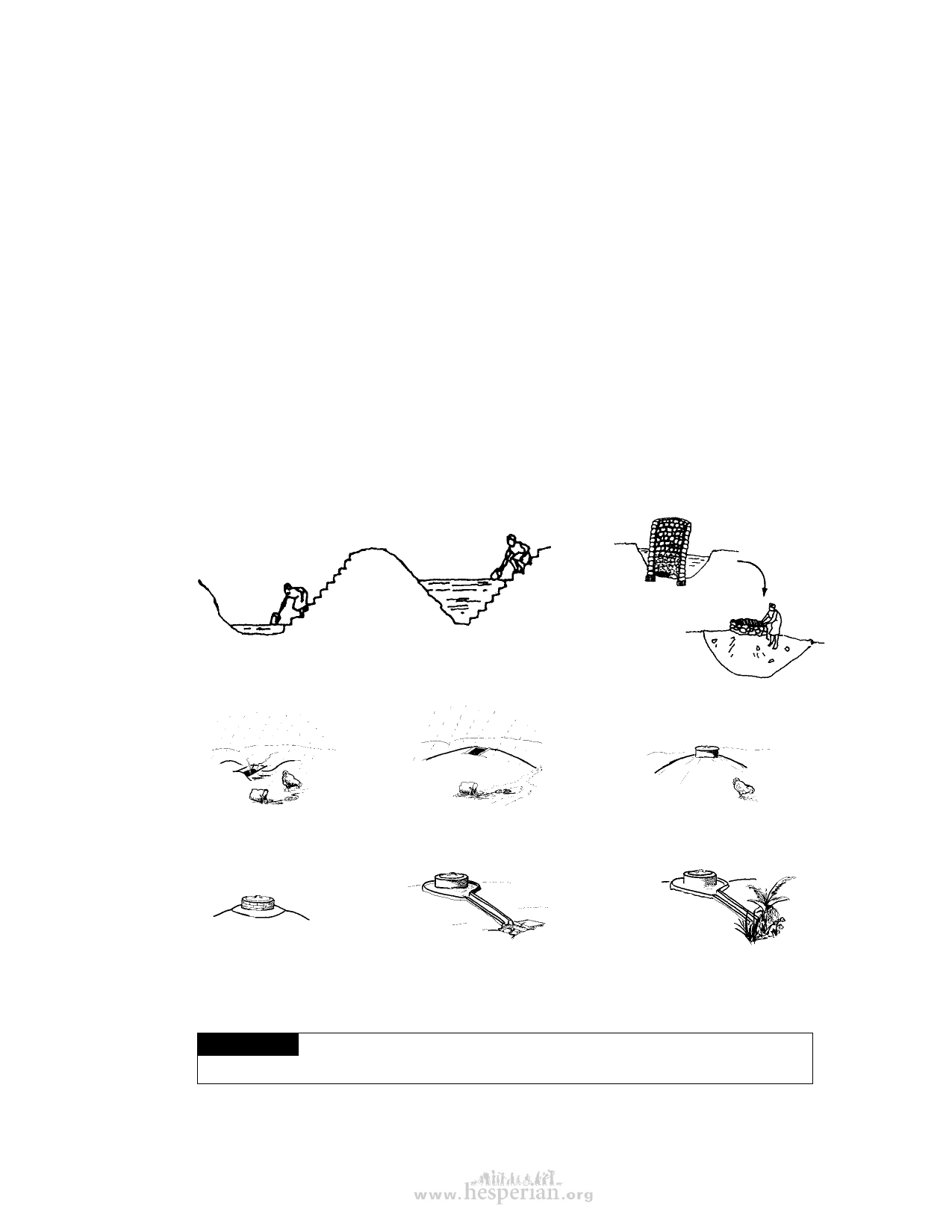
Water for Life 23
Steps to safer wells and water holes
Shallow hand-dug wells can provide good, safe water. But the water can dry up or be
easily contaminated. During rainy periods, runoff water may drain into a water hole,
carrying germs and other contamination. The muddy conditions around water holes
make it easy for germs to collect on the feet of people or animals that use the water.
Buckets and ropes around the rim of the well may also collect germs and can easily
contaminate the water when they are lowered into the well.
Making simple improvements can prevent contamination. One improvement is to
ensure that only clean buckets and ropes are lowered into the water. Building up earth
around the hole or lining the top with bricks or concrete rings will also make the water
safer. Lining the hole has the additional benefit of making it less likely to dry up or
collapse.
Before drilling new wells or making costly improvements to water systems,
consider making small improvements like these to make your water sources safer.
Improvements to open water holes
Build stone steps into the water hole so people can draw
water from the last step without getting wet. Always use
the last dry step. Never wade into the water.
Or turn the water hole into a well
so people can draw water with a
clean rope and bucket.
Water low
Water high
Improvements to basic wells and scoopholes
1. U nimproved scoophole
2. Mouth of hole built up
to keep out runoff
3. M outh closed off
with barrel and lid
4. T op strengthened
with bricks and small
drainage platform
5. P rotected water hole
with drainage platform
and runoff channel
6. Protected water hole with
drainage platform, runoff
channel, and garden
IMPORTANT Never drink directly from a water hole. Filtering the water and letting it
settle will remove some germs. Water treatment methods are described on pages 37 to 43.